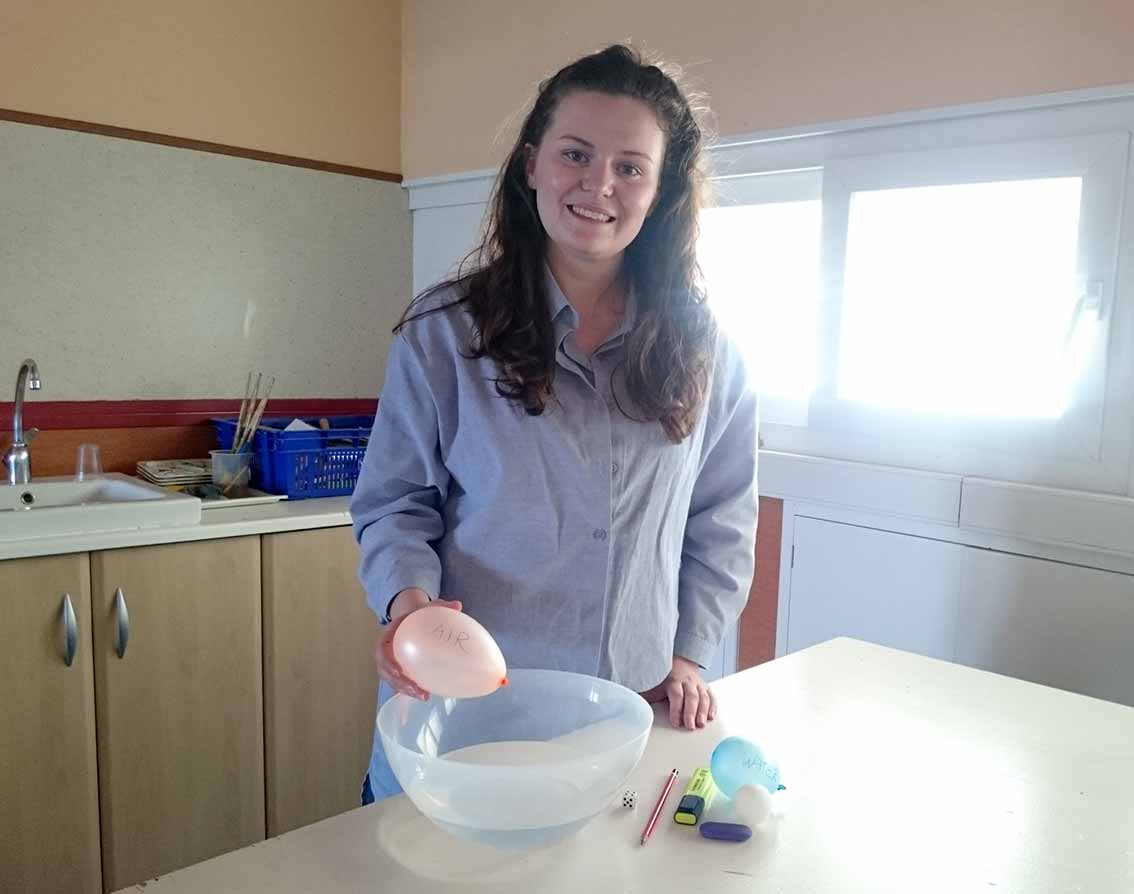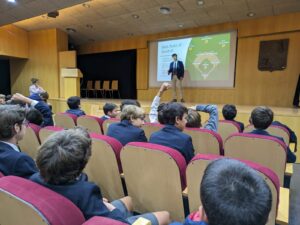We all know that children love hands-on activities. They love to learn through doing and playing. They also love to make a mess. So, why not practice some experiments with them to help them learn relevant vocabulary in a fun and practical way? ESL science activities are great to engage students.
ESL Science Activities Positively Impact the Teaching Role at School
The Art of Teaching is a Science

To some extent, every lesson is an experiment. As a teacher or language assistant, you may have done lots of research and planned out exactly what you’d like to achieve through your lesson. But you never know exactly how it will go, especially if you are doing the lesson for the first time.
You have your hypothesis! You expect that the students will behave well, engage in your lesson, and learn lots of new things and that all of this will be done in one hour. However, not all hypotheses hold true…
You gather your materials! Sure, they may not be conical flasks and chemical goggles, but you need books, technology, yourself and, most importantly, some students.
You combine the elements! Sometimes the results exceed your expectations, sometimes they are exactly as you expected and, well, sometimes you get more than you bargained for.
So, if the whole art of teaching can be considered a science, it is natural that we think about studying science in the English as a second language (ESL) classroom, too.
I Want to Include ESL Science Activities: What’s Next?
You may wonder where to start with science experiments in the classroom. Well, personally, I studied bioengineering and, long before then, enjoyed playing at home with my junior chemistry set and doing my own investigations in the garden. So, I’d love to share some ideas with you to help you with your ESL science lesson plans. These could be great experiments for your classroom.
Sink or float? – A Good ESL Science Lesson to Learn Vocabulary

A lot of very useful vocabulary can be learned through this experiment and it can be great fun, too. Before the ESL science lesson, you could watch a short video about the meaning of the terms float and sink, as your students will likely not be familiar with these words in English.
Materials and Method for this ESL Science Game
You will need: A basin of water and various objects to experiment with (e.g. wood, paper, tin foil, rubber ducks, ping pong balls, pencils etc).
Method: The students make their own predictions about whether the items will float or sink when they are dropped into the water. Once the students have made their predictions or hypotheses, the students take turns dropping items into the water. The class observes the results and this is repeated with all of the items.
Depending on the level of the students, it may be appropriate to introduce terms such as buoyancy and density and how these affect whether something will float or sink in water. For variations of this experiment, you can visit Science Net Links.
Food Chain to Teach English and Science
Many children love animals and nature, and they really engage with this subject. Firstly, it is important to ensure that the students have an understanding of basic ecosystems and food chains, as well as the relevant science vocabulary in English. This target language could include: predators, prey, hunt, eat, species of plants, and species of animals.
One activity which you could do with your students involves identifying which animals are prey and which are predators and linking these to make their own 3D food chain.
Materials and Method for this ESL Science Activity
You will need: various tubes of different lengths and diameters (the longest tube should have the smallest diameter, and the shortest tube should have the largest diameter). Cut out pictures of the animals and plants involved in a particular food chain as well. Before the ESL science lesson, you should stick the picture of the highest animal in the food chain to the longest, thinnest tube, and so on.
Method: The students are given all the tubes. They need to work out the order of the food chain. They need to experiment with different orders of the tubes, in order to make sure that all the tubes can fit together and, thus, make the food chain. There is only one correct solution, so the students can work on this until they have discovered the answer for themselves. If the children have a greater understanding and would find this activity easy, you could ask them to make their own food chain tubes for a different group in the class to solve. For more on this activity, you can visit Science Sparks.
Colorful Flowers: Teaching Science to ESL Students Can be Enjoyable and Educational
When teaching your students about plants and how they absorb water and nutrients, this experiment is both educational and enjoyable. What is also nice about this activity is that you need to observe it over a longer period, for example, a few days or a week, in order to interpret the results. Therefore, not only is it an experiment, but also a small science project.

Materials and Method for this ESL Science Activity
You will need: small vases, white flowers (e.g. roses), and a variety of food coloring dyes.
Method: Fill the vases with water and add drops of the food coloring in order to dye the water. Cut the stems of the flower so that they will be able to fit into the vases. Add the stems to the vases and…wait!
Over the course of a few days, you will start to notice that the petals change color, adopting the color of the food dye. After this change has happened, you can talk to the students about what they think is happening and why. It’s also a good idea to take before and after photos in order to remind the student of the change that has taken place.
English and Science: A Powerful Connection
So, overall, science is a fun and interesting tool which can be used in the ESL classroom. Within the field of science, experiments are particularly enjoyable. They have a practical element and the students get the thrill of seeing live results.
Have you tried any of these ESL science activities in your classroom? Please, tell us below!
2017/18 Poster by Rebecca E.










14 Responses
I love this article! It’s so important to teach students that English can be applied to other subjects in addition to language class. I love the idea for creating a food chain! It’s something so simple and it does not require a lot of materials but it is really engaging and fun for the students to work together to create the final product! Awesome ideas!
I love this article! I think science is a great subject to teach in English because there are so many similar Spanish and English words that stem from the Latin language. I really like the water, air, float, and sink exercise and can definitely see how my students would love this activity. I can tell that your experiments are really well-thoughtout to match the level of your student’s English. Really impressive–if I teach science in the future, I will definitely use these experiments as well. Did you buy all the materials and how? Or did your school provide the materials?
This is so great! I love the idea of practical, fun ways to incorporate english into the classroom. Another experiment I found was with eggs; put them in jars with different things (i.e. vinegar, soft drink, coloured dye etc.) and record the effects they have – this can also be used to help with health of teeth! So fun and practical
This would be a fun way to engage students! I did the Colorful Flowers experiment for a science fair project when I was in elementary school so doing that with students now would be a full circle moment! At my school for primary, science is taught in English, I am not apart of these lessons, but I would love to share this article with the current teachers so they could get some ideas as well!
Aww these experiments are so cool, Rebecca! I have 4th grade students now in a CLIL school and so I have been looking for more interesting lessons to help them learn their science/social science vocabulary. I will definitely be using some of these ideas!
I love the idea of teaching through science. I think that even though the kids may get extremely wound up doing it, it would be a fun and more natural way of integrating English into the classroom. I haven’t had experience doing this, but all the teachers from primary at my bilingual school are beginning to integrate English into their classrooms as a part of a program that they’ve begun. The kids might learn about planets, constellations, music, art, etc. in English for some lessons and they pick up vocabulary through context clues rather than forced workbook structure.
This is such a helpful article, although I do not teach science classes at my school, my roommate does and I know she would use all of these experiments. It seems to be a challenge for her to both incorporate English and the subject is the same class, but you seem to have it down!
love these ideas! I really like the flower one!
With some of my primary private classes we have also done some cooking and they learn the vocab for what ingredients and materials we need to use. All really fun ways to make learning more fun and not so boring!
I think the science experiments are a great way to combine hands-on learning with interdisciplinary learning! In our school, natural science is taught in English so these activities would be perfect to use in my science classroom! Thanks so much for the ideas!
Thank you so much for these ideas! I wasn’t expecting to be assigned to science classes in my school too. These are creative and I’m sure they’ll help future and current assistants.
I’ve never thought of using science experiments in my classes before but you have inspired me. These are some interesting but simple ideas that can easily be implemented! Thanks so much for the article!
I’m so glad you found the article useful 🙂 Exactly, I usually find that simple works best and these are just some of many easy yet fun and educational experiments!
I’ve been wondering about some science lessons for my classes and I love these ideas, especially the sink or float. 🙂
Great! The sink or float one is good as you can make it easier or harder to suit your students by using common or unusual objects and materials. I hope you and your students enjoy it! 🙂